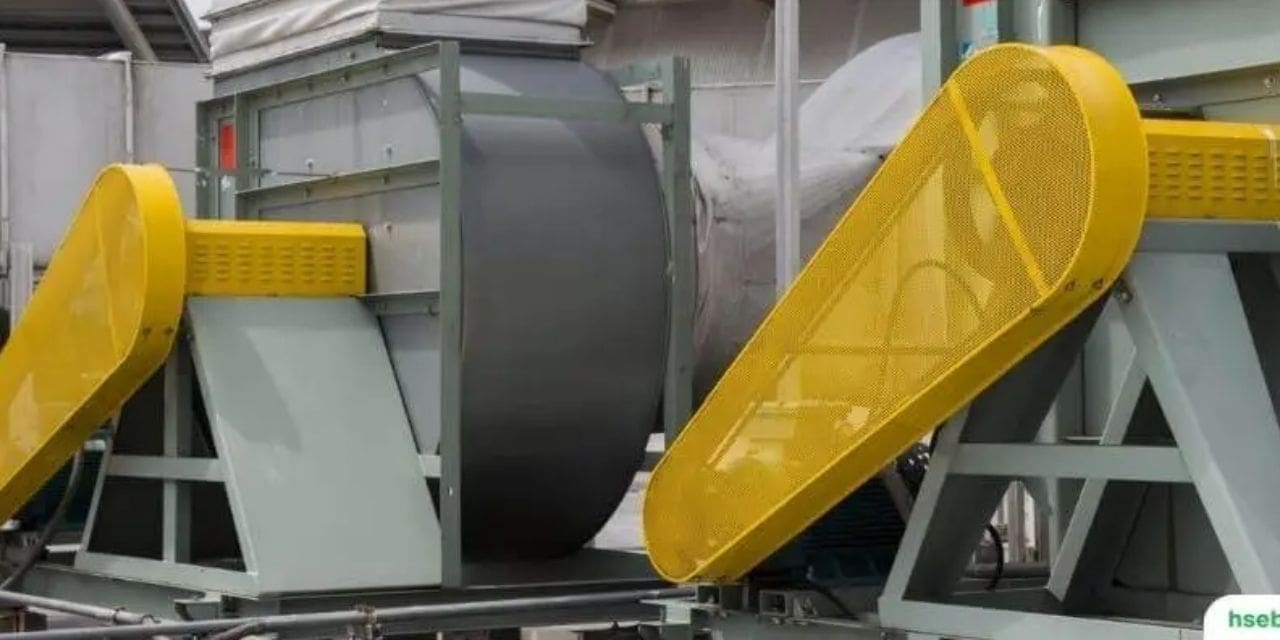In the bustling world of textile manufacturing, where the clatter of machinery is constant and productivity is paramount, ensuring the safety of workers is of utmost importance. One crucial aspect of workplace safety in this industry is machine guarding. In this article, we’ll delve into why machine guarding is key for workplace safety in the textile industry and how it can significantly mitigate risks for workers.
Understanding machine guarding
Machine guarding refers to the physical barriers, devices, or systems installed on machinery to prevent access to hazardous areas. These safeguards are designed to protect workers from potential injuries caused by moving parts, sharp edges, sparks, or other dangers associated with operating machinery. In the textile industry, where heavy-duty equipment like looms, spinning machines, and knitting machines are commonplace, effective machine guarding is essential to prevent accidents and ensure a safe working environment. It is important to provide industrial machines with machine guards to protect operators. The machine guards on Sabic.eu are a good example of reliable protection.
Mitigating risks
The textile industry presents a unique set of hazards due to the nature of its machinery and operations. From the rapid movements of weaving machines to the high-speed rotations of spindles, workers are exposed to various risks on a daily basis. Without proper machine guarding in place, these risks can escalate into serious accidents, leading to injuries, disabilities, or even fatalities.
By implementing robust machine guarding measures, textile manufacturers can significantly reduce the likelihood of accidents and their associated consequences. Here’s how:
- Preventing Contact with Moving Parts: Machine guards act as physical barriers that prevent workers from coming into contact with moving components such as gears, belts, and rollers. By restricting access to these hazardous areas, machine guarding minimizes the risk of entanglement, crushing, or amputation injuries.
- Containing Flying Debris: Textile machinery often generates flying debris or particles during operation, which can pose a danger to nearby workers. Installing appropriate guards helps contain these debris, preventing them from causing injuries or damaging equipment.
- Ensuring Equipment Stability: Some textile machines, especially those with large rotating parts, may pose stability risks if not properly secured. Machine guards not only protect workers from direct contact with these parts but also contribute to the overall stability and balance of the equipment, reducing the likelihood of unexpected malfunctions or tip-overs.
- Facilitating Safe Maintenance: Regular maintenance is essential for keeping textile machinery in optimal condition. Machine guarding plays a crucial role in facilitating safe maintenance procedures by providing easy access points while ensuring that workers are protected from the machinery’s operational hazards.
Compliance with regulations
In addition to safeguarding workers, implementing effective machine guarding is a legal requirement for textile manufacturers. Regulatory bodies such as the Occupational Safety and Health Administration (OSHA) in the United States and the Health and Safety Executive (HSE) in the United Kingdom have stringent guidelines regarding machine guarding to protect workers’ safety.
Failing to comply with these regulations can result in severe consequences, including fines, legal liabilities, and damage to the company’s reputation. By proactively adhering to regulatory standards and investing in comprehensive machine guarding solutions, textile companies demonstrate their commitment to workplace safety and ensure compliance with applicable laws.
Investing in worker well-being
Beyond regulatory compliance, prioritizing machine guarding reflects a company’s dedication to the well-being of its workforce. By fostering a culture of safety and implementing measures to mitigate risks, textile manufacturers not only protect their employees from harm but also enhance morale, productivity, and retention rates.
Moreover, investing in workplace safety can yield substantial long-term benefits, including reduced absenteeism, lower insurance costs, and improved reputation within the industry. By considering machine guarding as an integral part of their safety strategy, textile companies can create a safer, more resilient work environment for everyone involved.
Conclusion
In conclusion, machine guarding plays a pivotal role in ensuring workplace safety in the textile industry. By preventing contact with moving parts, containing debris, ensuring equipment stability, and facilitating maintenance procedures, machine guards significantly mitigate risks for workers and help companies comply with regulatory standards.
Textile manufacturers must prioritize the implementation of robust machine guarding measures as part of their overall safety strategy. By doing so, they not only protect their employees from harm but also uphold their legal obligations, enhance their reputation, and foster a culture of safety and well-being in the workplace.
Ultimately, investing in machine guarding is an investment in the future of the textile industry and the people who drive its success.

